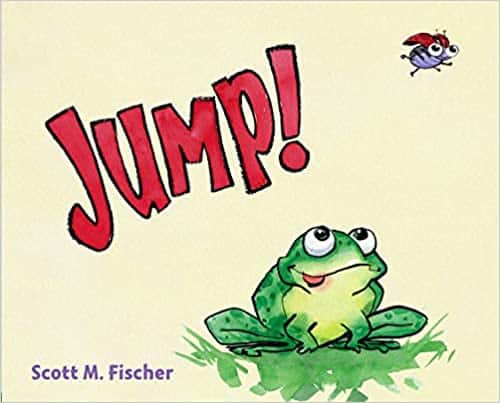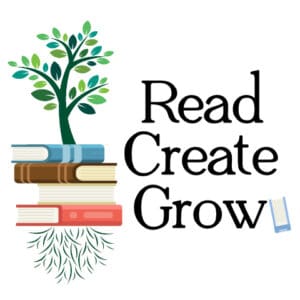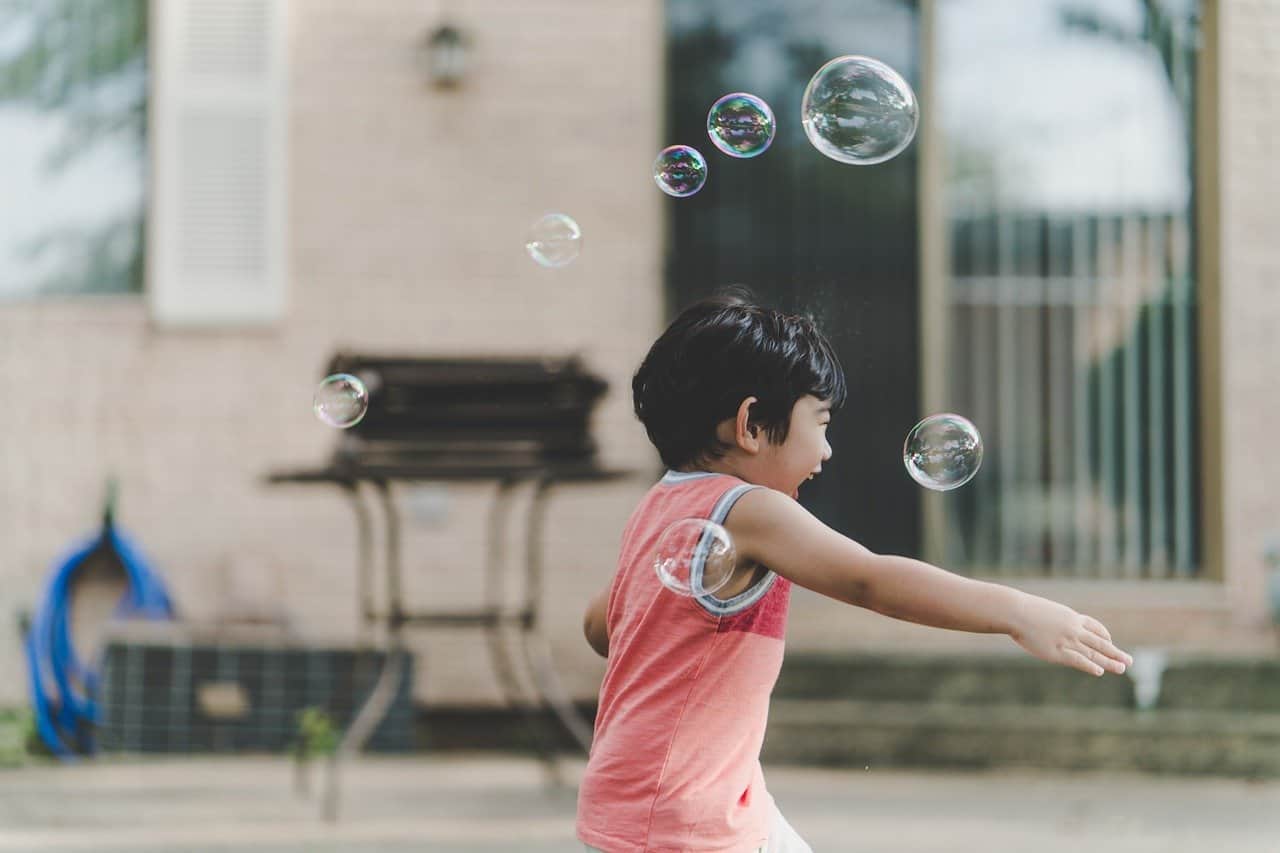Children are wiggly beings; it is part of their nature. They have so much energy and are just starting to work on growing their muscles and practice their coordination. The idea of sitting still to quietly read a book may seem impossible for your child, but it doesn’t have to be!
There are so many wonderful books that focus on movement, and even encourage moving along with the story. Growing muscles and having control and coordination, also called fine and gross motor skills, are an essential part of the necessary school skills your child will need, both throughout their school career and into life. What is a fine or gross motor skill anyways?
*This post may contain Amazon or other affiliate links. As an Amazon Associate I earn from qualifying purchases.
Fine and Gross Motor Skills
Motor skills are the things you do every day to move. They get you out of bed in the morning, allow you to grasp a toothbrush and get into your mouth (as opposed to up your nose or in your eye), walk around, use thumb and forefinger to pick up an object or write a note. They are an important part of your child’s development and a tool in their school skills tool box.
“Motor skills” is the overarching term for the coordinated movement of your large and small muscle groups. Both of which do different things, and the development of them are crucial for everyday life. The two groups are called “fine motor skills” and “gross motor skills” and they accomplish different tasks.
Fine motor skills are precise and delicate, they are responsible for the small and specific movements of the body and use smaller muscle groups, like the small muscles in hands and wrists. It also includes hand-eye coordination, being able to use your whole hand to pick something up, or just two fingers. Gross motor skills are responsible for the large movements of the body and the larger muscle groups, such as arms, torso and legs, and allow you to walk, run and even sit upright in a chair.
Take an in depth look at how motor skills affect your child’s education in the post Skills for School.
Reading and Movement
You may have never considered this, but reading impacts all areas of life, even motor skills! The physical act of reading a book, holding the book in your hand, gently selecting a single page, grasping the corner and turning engages both fine and gross motor skills by using the larger muscles of the arms to hold a book, the small movements of hands and wrists to select and turn a page and the hand-eye coordination required to make all of those movements happen together.
Movement can be added to virtually any story, whether it is mimicking the dance moves of a particular giraffe, dancing like a monkey or huffing and puffing along with the big bad wolf. Below is a list of books that truly celebrate movement and get those motor skills working. Try reading these together and get your wiggles on with these stories!
Three Ways to Read to a Child Who Likes to Move
You’ve tried story time, you’ve tried quiet time, but your kid just has a lot of energy and won’t sit still for a story. Or perhaps your child tends to sit still really well, and you want to get your little one to engage more with the story and move a little more. Try these three techniques to get your little one up and moving along.
Tip 1: Focus on movement
Choose a story that focuses on moving around. These are often books with a verb in the title (like ‘dance’ or ‘wiggle’), or a book featuring a song, but sometimes you need to peruse the book beforehand to determine if the book has a satisfying enough wiggle factor. Try to look for books that will have a rhythm or onomatopoeic quality to them. These are books that can be easily stomped, clapped or jumped along with, even if there is no specific movement that goes with the story. Sometimes these have the word “rhythm” in the title, or will be a spoof off a classic children’s song.
Tip 2: Choose interactive books
This does not mean electronic. Interactive books are ones that involve the reader in the process, think “Choose Your Own Adventure” style books. These are usually books that have some kind of command or instruction in the title telling the reader to do or not do something. That is a good clue that this will be the kind of book that asks your child to participate in the story. These are good especially for fine motor skills, listening comprehension and self-regulation.
Tip 3: Go beyond just reading the book
The best way to help your child get involved in the story is to do it with them. For a very young reader this might just be having them sit in your lap and bouncing them along with the movement in the story. For older readers this might mean you stand while you read and together make up silly dances or move like animals. Making it fun and funny will create a memorable experience your child will love and love to repeat.
Try out your new skills! These books were selected as a place to start finding books to get the wiggles out. Read 15 Books That Get the Wiggles Out for even more choices!

Goodnight Yoga: A Pose-by-Pose Bedtime Story
Written by Miriam Gates | Illustrated by Sarah Jane Hinder
Best for New Yogis Ages 4-8
What if there was a way to help your wiggly child get some wiggles while winding down for bed, and teaching self-regulation skills? Good news, there is! Goodnight Yoga works through calming and soothing yoga poses with your child as you relax for bed. The story is a calming walk through of the natural world settling down to sleep that encourages your little one to settle down. The mental images created are easy to recall later when a moment of self-regulation is needed. It is perfectly fine if your child cannot manage the exact movement at first. Consistent repetition of this book will build confidence in movement and reinforce their motor skills over time until they can perform these movements with ease and it becomes a relaxing part of bedtime. Try each movement together as you work through the pages and watch your child’s progress grow as you practice every night, building gross motor skills and muscle control.

Jump!
Written and illustrated by Scott M. Fischer
Best for Leap Froggers Ages 2-7
If you are really looking to burn down the energy reserves your child mysteriously hoards, this is the book to try. Each page is full of bright colored, cartoony illustrations and has simple, repetitive rhyming sentences. A few reads of this will have you easily memorizing the page and your child anticipating the “Jump!” that comes at the end of each line. Pair the reading with a big jump that starts with a crouch on the ground and ends with a leap in the air will burn some big energy really quick! This book is excellent for building those gross motor skills.

Don’t Push the Button!
Written and illustrated by Bill Cotter
Best for chronic button pushers ages 2-5
Larry has one rule- don’t push the button! Don’t even think about it! This is a fun, easy to read story that requires some fine motor skills with precision pointing and “pressing” the button, and some enthusiasm from the reader to help make it enjoyable and funny. You will laugh, your kids will laugh, and everyone will learn something about not pushing buttons they were told not to push and keeping their hands to themselves.
*This is, of course, a general guide and is not meant to diagnose. If you have concerns about your child’s behavior or development please be sure to speak with a medical professional, your child’s physician or teacher.


